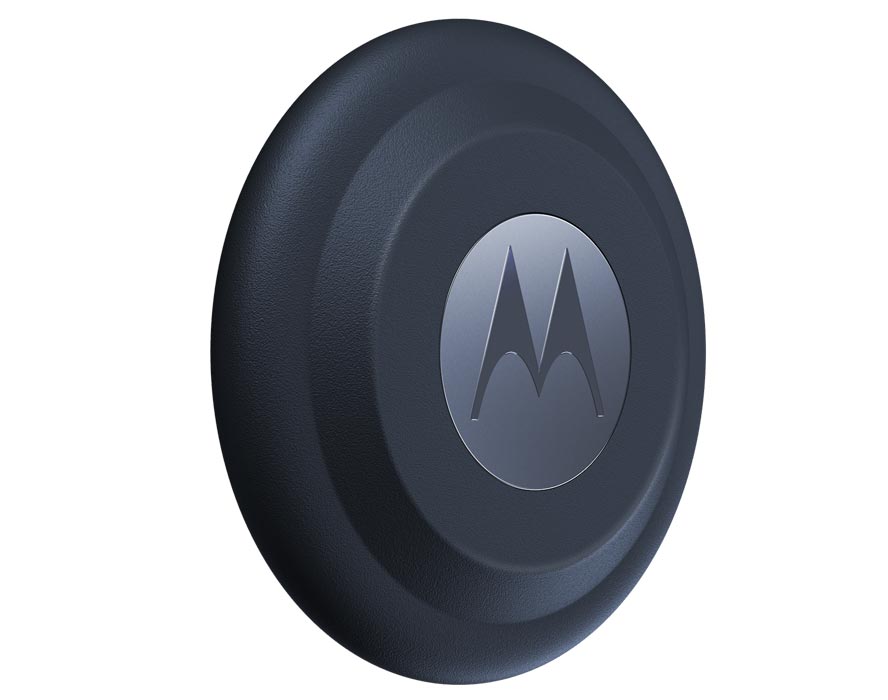The Motorola Tag, Motorola’s latest innovation in smart tracking devices, has made waves in the market. However, the device has sparked heated discussions for an unusual reason: its lack of built-in attachment options for keys, luggage, or bags. This oversight is shocking, given that the primary purpose of such devices is to help users keep track of their belongings. In this article, we’ll examine the Motorola Tag’s features, compare it to its competitors, and explore whether its strengths outweigh its unique limitations.

What is the Motorola Tag?
Under Lenovo’s umbrella, Motorola has entered the highly competitive smart tracking device market with the Moto tag. This device is available in two attractive colors—Starlight Blue and Jade Green—and is exclusively sold at Harvey Norman in Australia. With pricing set at $55 for a single tag or $179 for a four-pack, Motorola’s offering aims to compete against heavyweights like Apple’s AirTag, Samsung’s Galaxy SmartTag 2, and Tile trackers.
However, what sets the moto tag apart is not necessarily positive: the absence of a means to attach it directly to items such as keys, wallets, or luggage.
A Key Flaw in Design
While the Motorola Tag boasts advanced tracking features, its inability to attach directly to objects is glaring. Users must purchase third-party accessories from overseas vendors to make the most of the device.

This design choice appears even more puzzling considering the promotional materials for the tag showcase attached to bags. Despite this, Motorola’s PR team has confirmed that it has no plans to launch accessories locally in Australia.
In comparison, Apple AirTags, Samsung SmartTag 2, and Tile trackers offer seamless integration with various accessories, making them more user-friendly. These brands recognize the importance of convenience in the daily use of smart tracking devices, something Motorola has overlooked.
Competitive Features of the Motorola Tag
Despite its attachment drawback, the Motorola Tag includes several compelling features that make it a strong contender in the intelligent tracker market:
Google’s Find My Device Network
The moto tag integrates with Google’s Find My Device network, which boasts over 1 billion Android devices. This extensive network ensures users can locate their items almost anywhere in the world, provided they are within a 100-meter range of an Android device running Android 9.0 or newer that is opted into the tracking network.
Replaceable Battery
Unlike the Apple AirTag, which relies on non-replaceable batteries, the Motorola Tag uses a CR2032 replaceable battery. This design choice makes the device more sustainable and saves users from additional expenses in the long run.
Bluetooth and Future UWB Support
The device utilizes Bluetooth Low Energy (BLE) technology for accurate location tracking. Future updates promise Ultra Wideband (UWB) technology support, enhancing its precision.
Privacy and Security
Motorola has prioritized privacy and security by incorporating end-to-end encryption through Google’s trusted network. Additionally, the device can detect unknown trackers following a user and trigger a sound alert, ensuring protection against misuse.
Multifunctional Button
A standout feature is its multifunctional button, which enables users to locate their phone even when it’s in silent mode. This adds versatility to the tag’s functionality, providing more value to users.
Durability and Water Resistance
With an IP67 water resistance rating, the Moto tag can withstand submersion in up to 1 meter of water for 30 minutes. Its sturdy build ensures it remains reliable in various conditions.
Pricing Comparison
The Motorola Tag is priced higher than its competitors in some configurations. For example:
- Motorola Tag: $55 for one, $179 for a four-pack
- Tile Trackers: Lower-priced four-pack options
- Samsung SmartTag 2: More affordable in some markets
While the Google Find My Device network adds significant value, potential buyers may hesitate due to the higher cost and lack of native accessories.
How Does It Compare to Competitors?
Apple AirTag
- Pros: Wide availability of accessories, seamless iOS integration
- Cons: Non-replaceable battery
Samsung SmartTag 2
- Pros: Works well within Samsung’s ecosystem, replaceable battery
- Cons: Requires a Samsung phone for full functionality
Tile Trackers
- Pros: Affordable, compatible across multiple platforms
- Cons: Smaller network compared to Google’s Find My Device
The Motorola Tag’s key advantage lies in its integration with Google’s expansive tracking network, which neither Samsung nor Tile can match.
Airline Integration: The Future of Tracking?
Interestingly, airlines like Qantas and Virgin Australia have begun integrating baggage tracking features in their apps. These innovations notify passengers about the arrival of their luggage at airports, highlighting the growing utility of smart trackers.
Brands like Apple and Motorola are positioned to play a critical role. However, the Motorola Tag’s lack of accessories could hinder its potential adoption in airline tracking scenarios.
The Final Verdict
The Motorola Tag is a mixed bag. On one hand, it offers top-notch features like compatibility with Google’s Find My Device network, privacy safeguards, and a replaceable battery. On the other hand, its lack of built-in attachment options is a significant downside, especially for users seeking out-of-the-box functionality.
While the Motorola Tag has the potential to stand out in the competitive, intelligent tracking market, its success will largely depend on whether users are willing to overlook its attachment limitation and invest in third-party accessories. For now, it’s a promising device that falls short of delivering the convenience its competitors provide. In a market where user-friendly design often trumps cutting-edge technology, Motorola may need to rethink its approach to accessories to compete with Apple, Samsung, and Tile truly.

Selva Ganesh is the Chief Editor of this Blog. He is a Computer Science Engineer, An experienced Android Developer, Professional Blogger with 8+ years in the field. He completed courses about Google News Initiative. He runs Android Infotech which offers Problem Solving Articles around the globe.



Leave a Reply